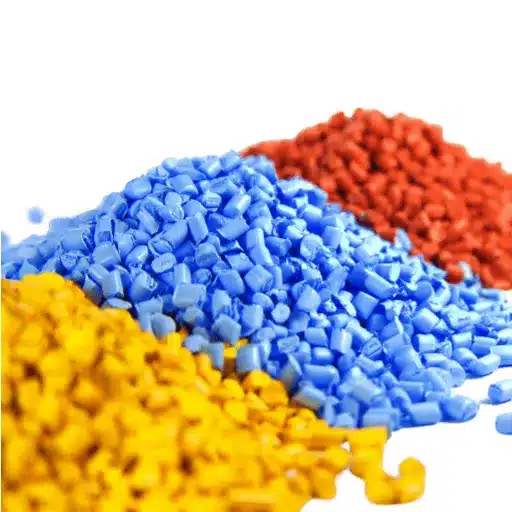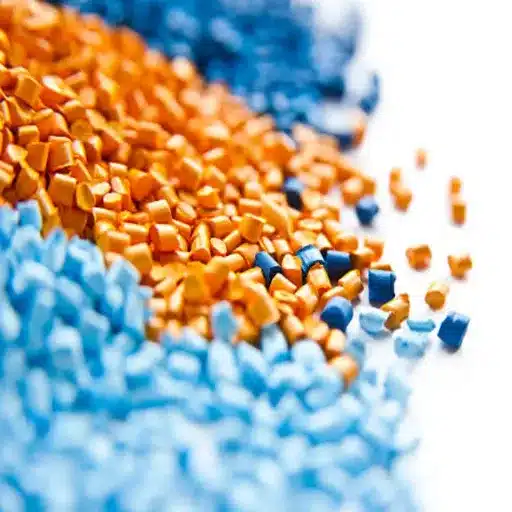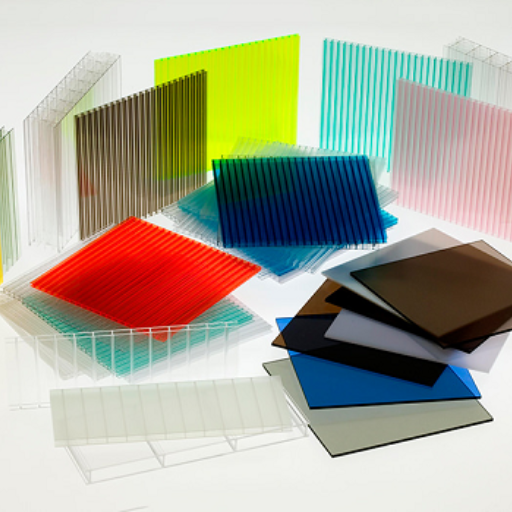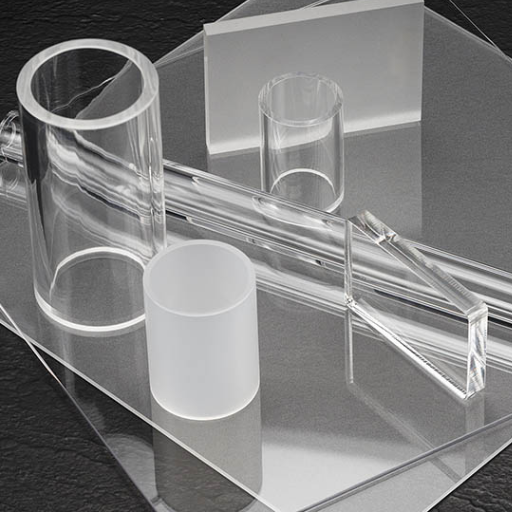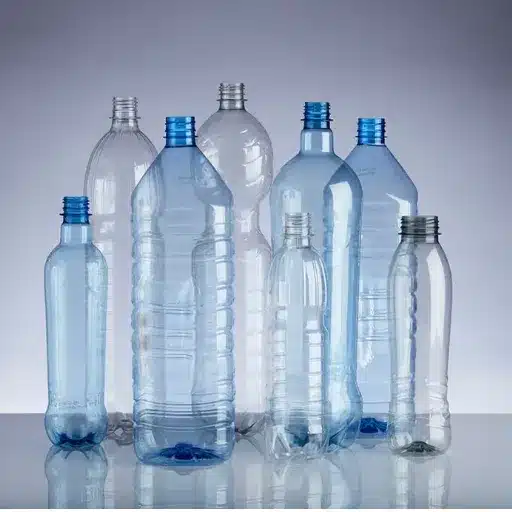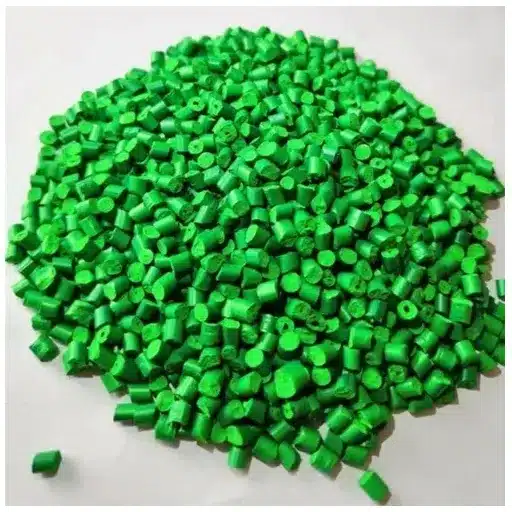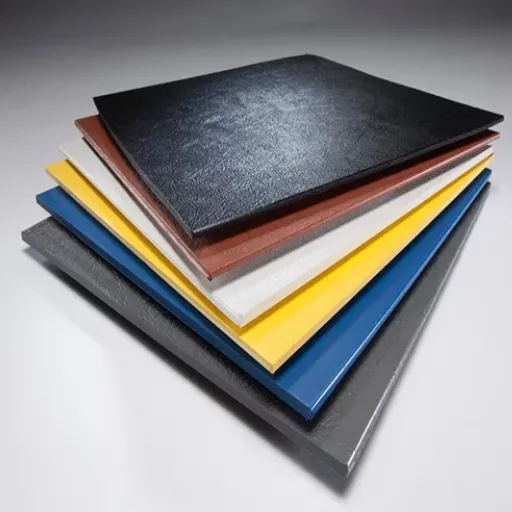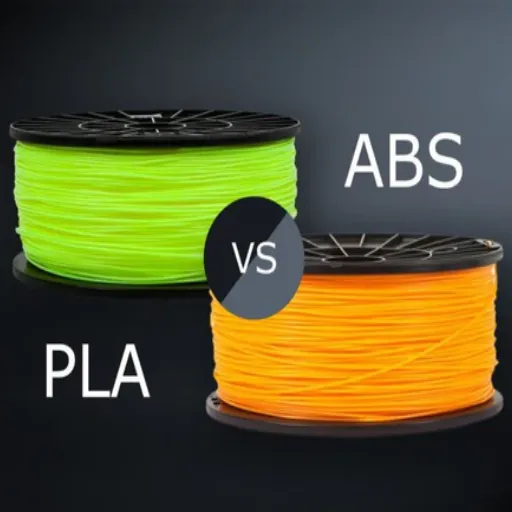However, knowledge of ABS’s thermal properties is essential for unlocking the material’s full potential across different applications, especially its melting temperature. This article explores the science behind the melting point of ABS, its significance, and its impact on applications. In short, this guide will provide you with the most important and valuable insights into ABS and its thermal behavior, whether you are an engineer, designer, or a curious learner.
Introduction to ABS Plastic

Definition of ABS Plastic
🔬 What is ABS?
Acrylonitrile Butadiene Styrene (ABS) is a thermoplastic polymer that can be classified as a multipurpose material and is used in various sectors due to its nice mix of characteristics such as durability, flexibility, and low weight. It is a copolymer consisting of three different monomers: acrylonitrile, butadiene, and styrene, whereby each one gives the material special features.
The first one, acrylonitrile, imposes rigidity and chemical resistance, while the second one, butadiene, imparts toughness and durability, and the third one, styrene, gives an attractive surface finish and easy processing. These properties account for the wide usage of ABS in different areas such as car and consumer electronics, household goods, and 3D printing. Furthermore, its high impact and temperature change resistance make it an even more attractive option for engineering and design purposes.
Composition of Acrylonitrile Butadiene Styrene
Acrylonitrile butadiene styrene (ABS) is a thermoplastic polymer that is made out of three essential monomers: acrylonitrile, butadiene, and styrene. Acrylonitrile gives chemical resistance and rigidity to the polymer, thus it can endure the heat and the chemicals’ effects with less wear. Butadiene gives to the polymer softness and strength, which improves the polymer’s ability to absorb shocks; so it finds application in areas where high impact resistance is required. Styrene yields a nice finish and makes processing the material easy, thus allowing it to be formed into elaborate shapes.
| Monomer | Typical Weight % | Key Property Contribution |
|---|---|---|
| Acrylonitrile | 20-30% | Chemical resistance and rigidity |
| Butadiene | 15-35% | Toughness and impact resistance |
| Styrene | 40-60% | Surface finish and processability |
Based on the most recent data, ABS usually contains these monomers in different ratios, typically around 20-30% acrylonitrile, 15-35% butadiene, and 40-60% styrene by weight, depending on the desired application and properties. This proportion allows plastic makers to tune ABS mixtures to get the best results for certain industries, such as automotive, construction, or consumer electronics. Also, modern times in polymer science have come up with new and improved grades of ABS, which are thermally resistant, flow better during molding or less environmentally damaging, thus it is a material that keeps evolving in the field of modern engineering.
Applications of ABS Plastic Material
ABS (Acrylonitrile Butadiene Styrene) has become an important material used in many different industrial operations owing to its excellent combination of strength, durability, and ease of manufacturing. The most recent studies state that its flexibility makes it a prime material for the following applications:
🚗 Automotive Industry
Due to its lightweight nature, impact resistance, and mechanical stress durability, ABS is an industry standard for the mass-production of dashboards, trim parts, and interior panels, among others.
📱 Consumer Electronics
ABS is the leading material for the manufacturing of smartphone, computer, and home appliance casings and housings due to its high insulating properties and ability to withstand temperatures of up to 100°C.
🏗️ Construction and Building Materials
Thanks to its high mechanical strength and resistance to aggressive chemicals, ABS is one of the main materials used for the creation of pipes, fittings, and frame parts that can last longer than the structure itself.
🖨️ 3D Printing
ABS filaments are the most common among 3D printing techniques as they produce a strong and long-lasting product with a smooth surface, thus making it widely used for prototyping and manufacture.
⚕️ Medical Equipment
Even though ABS can be made very light and it is cost-effective, it does not mean that it cannot be used for gadgets in hospitals and clinics; in fact, ABS is used in the manufacturing of lightweight medical equipment such as drug delivery systems and protective casings.
These uses are a clear evidence of the material’s flexibility and, together with the innovations and modifications made to ABS to fulfill the demand of modern industries, they underpin the fact that it is a continually evolving material.
Understanding the Melting Point of ABS
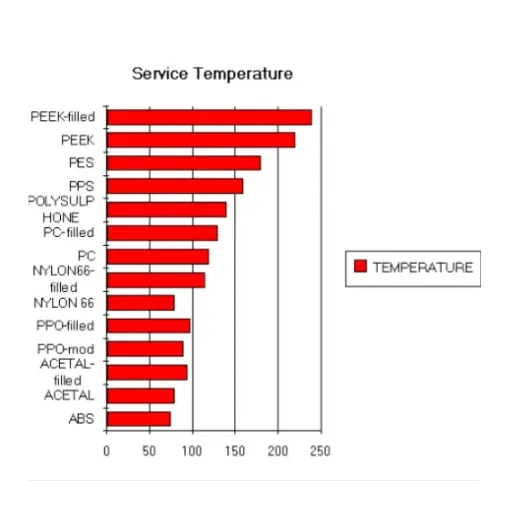
What is the Melting Point?
🌡️ Critical Temperature Information
Due to its nature, ABS (Acrylonitrile Butadiene Styrene) doesn’t have a very clear melting point, which is characteristic of crystalline solids. Rather it has a glass transition temperature; a typical range for this is 210°F to 240°F (approximately 99°C to 116°C).
The temperature that is given above is the range where ABS is soft enough for it to be shaped or molded and not completely melted. Its amorphous molecular structure is very elastic in thermal areas, so it becomes very friendly for processes that demand high temperature like 3D printing and injection molding. For more accurate applications, it is very important to know and control the heating process within this range so as to not lose the material’s properties.
Significance of Melting Temperature in Applications
The significance of the melting point is that it serves as a guideline for performing various processes on the material. This melting point range for ABS ensures that these properties are kept: structural integrity, elasticity, and nice surface finish. The mastership of these concepts is particularly essential in the fields of 3D printing and injection molding, where very exact temperatures are required to prevent occurrences of problems like deformity, uneven layering, or degradation of the material.
💡 Modern Temperature Control Innovations
Recent findings emphasize the improvement in temperature control technology, such as AI-powered thermal regulation, which increases the accuracy and effectiveness of processes that are dependent on heat. Moreover, these innovations stress the need for mastering the thermal properties-material performance relationship in order to optimize application outcomes further.
Comparison with Other Thermoplastics
In comparing the high-end thermoplastics such as PEEK (Polyether ether ketone) with ABS (Acrylonitrile butadiene styrene), temperature resistance, strength, and versatility of application are among the major differences that stand out. Recent searches insights suggest that PEEK and similar materials have great high-temperature resistance even at such applications in the fields of aerospace and medical. In contrast to that, ABS would be the cheaper and easier option for such applications as consumer products and automotive parts. Although, they cannot compete in terms of the high-temperature resistance that is offered by PEEK.
| Material | Temperature Resistance | Typical Applications | Cost |
|---|---|---|---|
| ABS | Moderate | Consumer products, automotive parts | Lower |
| PEEK | Very High | Aerospace, medical devices | Higher |
The decision between thermoplastic is, at the same time, a trade-off between the performance requirements and the economic aspect, considering that most AI technologies mentioned, such as material optimization and thermal regulation, are set to become more attractive.
Factors Influencing the Melting Point of ABS

Different Grades of ABS
ABS (Acrylonitrile Butadiene Styrene) comes in several grades, each one designed for unique applications and performance standards. The differences among the grades can be determined with respect to impact strength, heat tolerance, and flow properties. For instance, high-impact grades are extensively used in car parts, while flame-retardant grades are utilized in electric applications.
📊 Common ABS Grades
- High-Impact Grades: Extensively used in automotive parts for superior toughness
- Flame-Retardant Grades: Utilized in electrical applications for safety compliance
- Heat-Resistant Grades: Enhanced thermal stability for demanding environments
- Recycled ABS: Incorporating eco-friendly materials while maintaining performance
The most recent information shows novel inventions in the ABS formulations, like the addition of recycled materials, which is to a large extent to the manufacturer’s ability to provide temperature-sensitive materials for tests to be made at customer’s discretion.
Role of Additives in Melting Temperature Change
Additives are the main factors leading to the melting temperature changes of ABS that make it the best candidate for various industrial applications. As per the data, some additives, e.g. plasticizers or flame retardants, can not only reduce but also control the melting temperature to some extent, at the same time, keeping the structural integrity of the material. On the other hand, the addition of reinforcing fillers like glass fibers or minerals may slightly increase the melting point which will eventually lead to better heat resistance and strength of the material.
| Additive Type | Effect on Melting Point | Primary Benefit |
|---|---|---|
| Plasticizers | ↓ Decrease | Improved flexibility and processability |
| Flame Retardants | ≈ Neutral | Enhanced fire safety compliance |
| Glass Fibers | ↑ Increase | Better heat resistance and strength |
| Mineral Fillers | ↑ Increase | Enhanced dimensional stability |
These developments have been making it easier for the polymer industry to mold ABS into various applications by not only maintaining its eco-friendliness through the use of recycled plastics but also creating high-performance plastics suitable for various ranges of operating conditions.
Effects of Processing Conditions
The characteristics of the ABS (Acrylonitrile Butadiene Styrene) material are heavily related to the production conditions under which it was made. Temperature, pressure, and cooling rates during the manufacturing process are among the most significant factors that determine the final product’s mechanical and thermal properties.
⚙️ Critical Processing Factors
Based on the most recent information, the advancements in the injection molding process have allowed for more precise control of these conditions. Techniques such as real-time monitoring and adaptive cooling systems are being utilized to reduce the occurrence of defects and to ensure the uniformity of ABS manufacturing. Such improvements are, in turn, the drivers of greater efficiency and quality in manufacturing processes, which are capable of satisfying the growing needs of industries like automotive, electronics, and consumer goods.
Testing Methods for Determining ABS Melting Temperature

Standard Testing Procedures
In order to find the exact melting point of ABS (Acrylonitrile Butadiene Styrene) several standard testing methods are used. One of the most popular ones is Differential Scanning Calorimetry (DSC). The principle behind this technique is to measure the heat flow related to the material’s physical changes. Thus, it gives very accurate data on the melting point as well as the glass transition temperature.
🔬 Primary Testing Methods
1. Differential Scanning Calorimetry (DSC)
Function: Measures heat flow related to material’s physical changes
Output: Accurate data on melting point and glass transition temperature
Advantage: Highly precise thermal analysis
2. Melt Flow Index (MFI) Tester
Function: Examines flowability under specific temperature and pressure
Output: Material flow characteristics data
Advantage: Practical processing information
3. Thermogravimetric Analysis (TGA)
Function: Tracks weight loss or gain at different temperatures
Output: Thermal stability and decomposition data
Advantage: Supplements other testing methods
When allied with AI data mining tools, these modern methodologies get the chance to be spread out and adopted by the whole industry as the most up-to-date, accurate and reliable ones for production optimization and property control, thereby benefiting the entire sector of materials.
Importance of Accurate Measurement
Measurement accuracy is one of the most important prerequisites for innovation and quality control in all sectors. Moreover, the subsequent data has been complementary, as it has given access to researchers and practitioners the real-time insights, trends and measurement technology advancements. The collaboration makes it easier to deal with the questions like how to increase the accuracy of measurements or how to make the processes the most suitable for a certain application.
💡 Key Insight: Such a riches of information could be turned into industry best practices, technique refinements and consistent results under the strictest standards, thus, driving product development and performance to be further improved.
Common Tools Used in Testing
Testing is a field that employs several different types of tools that are meant to increase the precision, efficiency, and reliability of the measurements. Some of the most common tools in use are multimeters, oscilloscopes, and spectrum analyzers, which all play an important role in the measurement of electronic components and systems’ electrical properties.
Testing Tools by Category
⚡ Electronic Testing
- Multimeters for electrical measurements
- Oscilloscopes for waveform analysis
- Spectrum analyzers for frequency analysis
💻 Software Testing
- Selenium for automation testing
- JUnit for validation processes
🔨 Materials Testing
- Hardness testers for surface properties
- Tensile testing machines for mechanical strength
- Ultrasonic testers for non-destructive testing
Combining the latest data from search engines, the professionals are able to spot the emerging tools, the innovative testing methodologies, and the updated protocols that come along, hence, making the performance analyses more precise and the accuracy in different applications improved.
Practical Implications of ABS Melting Temperature

Considerations for Product Design
The designers that decide to use ABS materials in their products have to consider the melting temperature of the material to the extent that they can assess durability, functionality, and manufacturability. According to the most recent data, ABS melting temperature is usually in the range of 200°C to 250°C. Nonetheless, this is not an absolute figure but a softening range that reflects the material’s non-crystalline structure.
📐 Design Considerations Checklist
- Assess Operating Environment: Evaluate temperature ranges the product will experience
- Select Processing Method: Choose between injection molding, 3D printing, or other techniques
- Understand Thermal Behavior: Study how ABS responds to heat exposure
- Prevent Warping: Design to minimize deformation risks
- Optimize Performance: Balance structural integrity with cost-efficiency
- Review Current Research: Stay updated on thermal limits and best practices
When determining operating environments and processing methods for ABS, designers will have to take into consideration the thermal behavior of the material and its potential processing techniques, which could be injection molding or 3D printing. Furthermore, knowledge of the thermal limits revealed by the current research will allow the manufacturers to reduce the risk of warping, deformation, or less-than-expected performance during the heat exposure. The design process that makes use of this information will yield products that are not only structurally sound but also performance smart without consuming a lot of time and resources.
Processing Techniques for 3D Printing with ABS
The process of 3D printing with ABS (Acrylonitrile Butadiene Styrene) isn’t easy, and a number of processing techniques have to be employed to get good quality parts. ABS is a thermoplastic which can be distorted under heat but still has that character of a plastic due to its flexibility and strength. To get the best outcome, the first step is to set the extrusion temperature at a steady level, in the range of 230°C to 260°C, depending on the printer and filament.
| Parameter | Recommended Range | Purpose |
|---|---|---|
| Extrusion Temperature | 230°C – 260°C | Proper material flow and layer adhesion |
| Heated Bed Temperature | 90°C – 110°C | Prevents warping and ensures bed adhesion |
| Chamber Environment | Enclosed | Maintains stable temperature, reduces warping |
🔧 Pro Tips for ABS 3D Printing
- Bed Adhesion: Apply a thin layer of ABS slurry or glue stick on the print bed for improved adhesion
- Ventilation: Ensure proper ventilation as ABS gives off fumes when printed
- Enclosed Chamber: Use enclosed printing chambers to maintain temperature stability
- Environmental Controls: Precise controls enhance quality and reliability of printed parts
Modern sources suggest, one of the techniques for improving adhesion while working with ABS is to use a very thin layer of ABS slurry or glue stick on the print bed. Also, good ventilation should be in place as ABS gives off fumes when printed. This will provide a healthy atmosphere for the users. By interfacing these modern techniques with precise environmental controls, the quality, and reliability of ABS 3D printed parts are likely to be enhanced, whether by the manufacturer or the hobbyist.
Safety Considerations Related to Heat Deflection Temperature
ABS is a material whose Heat Deflection Temperature (HDT) range is from 85°C to 105°C, thus it should be given very careful consideration in the case of working with it. This feature indicates the temperature above which the material starts to change gradually under a certain load. Whenever the load comes from elevated temperatures – for example, automotive or mechanical parts in the vicinity of heating – the design must be done in such a way that the end product will not suffer from warping or failure.
⚠️ Critical Safety Guidelines
- Stay Within Temperature Limits: Never exceed the advised HDT range (85°C – 105°C)
- Avoid Prolonged Exposure: Extended heat exposure compromises structural integrity
- Monitor Operating Conditions: Ensure components don’t exceed thermal tolerance
- Consider Reinforcements: Use reinforced ABS blends or coatings for high-heat applications
- Design for Safety: Build in safety margins for demanding use cases
That taking of the limits will be a giveaway, as prolonged exposure beyond the HDT will not only compromise the structural integrity of ABS parts but also impair their functionality. To reduce risks users should stay within temperature limits that are advised and also make sure that the printed components are not in the conditions that exceed the material’s thermal tolerance. Reinforced ABS blends or coatings can be employed to boost resistance against heat distortion making it a durable and safe option for demanding use cases.
Frequently Asked Questions
The melting point of ABS plastic which is short for acrylonitrile-butadiene-styrene is usually a little higher than a range of 220-260°C (428-500°F). The melting point is an important factor in determining the temperature range of applications where one can use ABS plastic. The melting behavior of ABS is determined by the polymer chains made up of styrene and acrylonitrile. When melted, ABS is like a liquid which makes it easy to be processed and shaped during operations like thermoforming and 3D printing. Thus, the melting point is something one must understand while learning about ABS since it is one of the main reasons for its being a commonly used thermoplastic polymer.
The glass transition temperature Tg of ABS is a pivotal thermal property that dictates its applicability in different sectors. Normally, the Tg of ABS is approximately 100°C (212°F), thus, when subjected to heat, the latter gets softened and plasticized with no loss of flexibility. If the Tg is surpassed ABS becomes a hard and brittle material. This transition is of paramount importance in the case of ABS, especially for applications where the material would be subjected to a range of temperatures. Tg can be of great help to the manufacturers in making sure that the ABS being used in the products is capable of withstanding a wide range of operating temperatures without losing its quality and stability.
The heat deflection temperature HDT of ABS is an indicator of the thermal endurance of the material to take on an actual load without getting too soft and deformed. The usual HDT value of the plastic is around 85°C (185°F) which is the temperature for deformation under a certain load on the material. HDT is very informative for the users of the material in the field of 3D printing, since it gives them insight into the material performance both during and after the process. A thorough understanding of the thermoplastic’s HDT leads to an appropriate choice of material for those applications where the products might be exposed to high temperatures, hence, the quality and durability of the products are guaranteed.
There are multiple pros and cons when placing ABS in contrast to PLA (polylactic acid) in 3D printing, and some are more important than others. The main one being the heat resistance, as PLA is simply not as good as ABS when it comes to thermal and mechanical properties ABS is mainly for the best applications that need strength and resistance to impact. On the other hand, PLA is the winner when it comes to leading manufacturers in terms of hassle-free prints thanks to the fact that its melting point is low and there is very little warping involved in the cooling process. If a 3D printing player has a specific interest in ABS then they need to consider that it has higher melting point and heat deflection temperature that can influence the print area. It’s a tough talk between these two materials as they both come with their own pros so the decision will revolve around the particular project’s requirements.
If one were to list the most important thermal characteristics of ABS, the first one would be the melting point or the softening point, as these are the points wherein the thermal characteristics of ABS play a decisive role in its function as a plastic material. The melting point is usually in the range of 220°C to 260°C which allows it to go through a liquefaction process rather neuron like where heat is the only element and no other conditions are applied. The thermal properties of ABS are influenced by the presence of polybutadiene, which adds to its rubbery state and impact resistance. Moreover, the capability of ABS to maintain structural strength even under a wide temperature range makes it suitable for a variety of applications from consumer goods and automotive parts to medical instruments. Understanding the thermal characteristics of ABS is essential for manufacturers to control the use of ABS in products that could be affected by temperature changes.
Reference Sources
- Oregon State University – Annealing for ABS Plastic Parts
Discusses the glass transition phase of ABS (105-107°C) and its implications for stress relief and strengthening. Source
- Clemson University – Analysis of the Mechanical Properties of 3D Printed Recycled ABS
Highlights the melting temperature of ABS (200°C) and its suitability for various applications. Source
- PubMed Central – Detailed Thermal Characterization of Acrylonitrile Butadiene Styrene (ABS)
Explains the amorphous nature of ABS and its lack of a specific melting point, focusing on its glass transition temperature. Source







